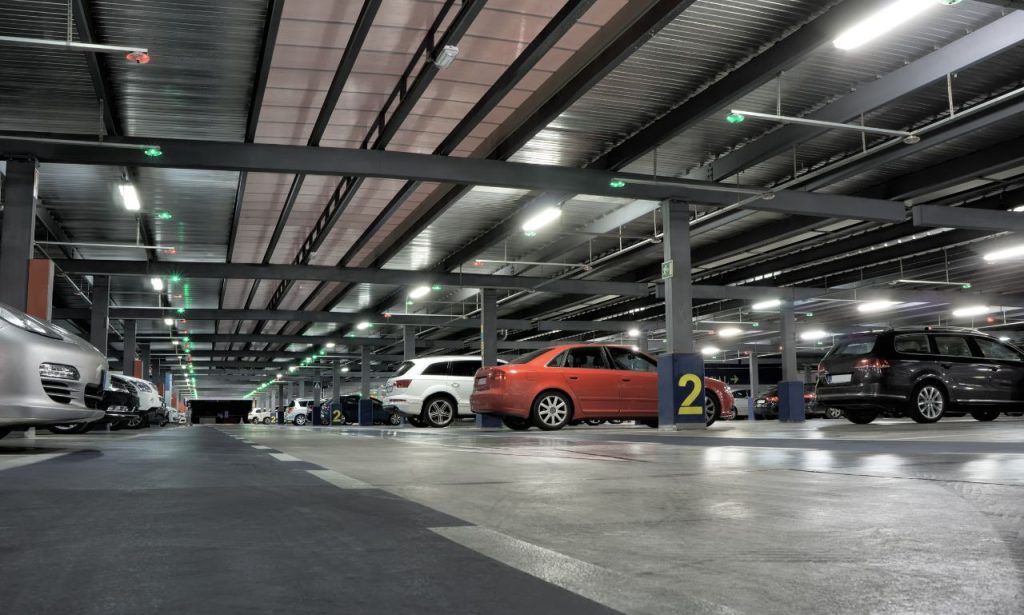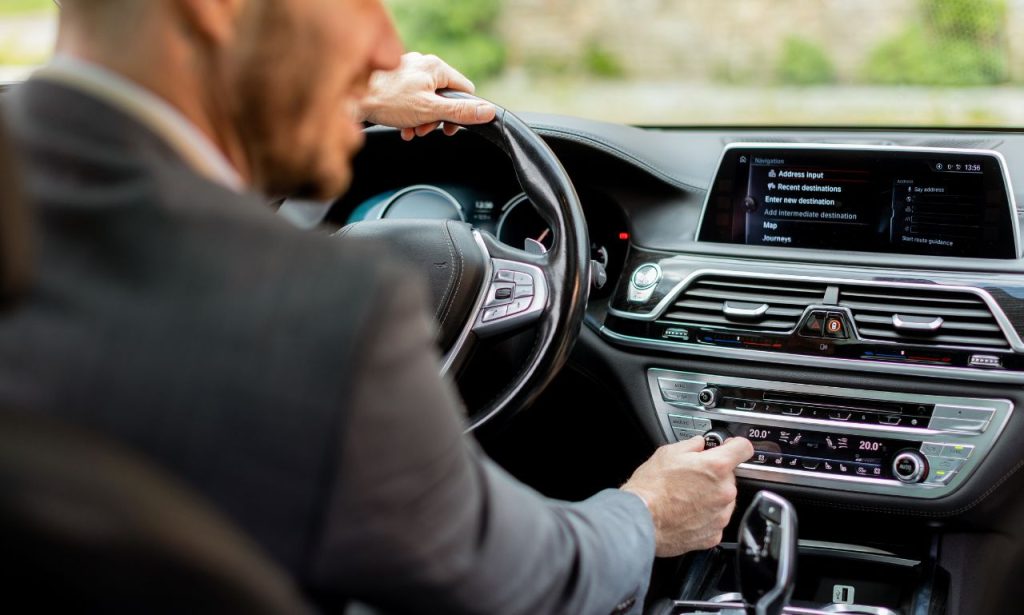Imagine sliding into a car on a blazing summer day, only to be met with a rush of sweltering, suffocating heat. It’s a feeling you wouldn’t wish on your worst enemy. But keeping your car cool during the summer is more than a matter of comfort; it’s about protecting your vehicle, ensuring your safety, and enhancing your overall driving experience. This guide on how to keep a car cool in the summer will provide you with more than just conventional advice. Here, you’ll discover a variety of practical, innovative techniques that go beyond the basics. From leveraging the greenhouse effect to utilizing smart technologies, let’s explore how to transform your hot summer car into a pleasant, breezy haven.
Understand the Greenhouse Effect in a Vehicle
To fully grasp why your car becomes an oven in the summer, it’s important to understand the greenhouse effect. When sunlight enters your car, it turns into heat. The windows act as insulators, trapping the heat inside and causing temperatures to rise significantly—often more than 40°F higher than outside temperatures. This trapped heat not only makes the interior uncomfortable but can also damage your car over time, affecting upholstery, electronics, and your vehicle’s overall integrity.
Understanding this mechanism allows you to counteract it effectively. To mitigate the greenhouse effect, you’ll need to employ strategies that limit heat entry, encourage circulation, and reflect sunlight. Let’s break down each method.
Park in Shaded Areas or Garages

One of the most straightforward methods of keeping your car cool is to minimize sun exposure by parking in a shaded area or inside a garage. By reducing direct exposure to sunlight, you prevent the rapid accumulation of heat. The next time you pull into a parking lot, look for trees or large structures that provide ample shade. If you’re able, invest in a carport for your home to provide a consistent solution for sun protection.
When parking under trees, be aware of possible sap or bird droppings, which can damage your car’s paint. Some people even carry a foldable car shelter for particularly hot days, allowing you to create instant shade wherever you go.
Use Windshield Sunshades
Windshield sunshades are highly effective at reducing the internal temperature of your car by reflecting sunlight before it enters the vehicle. These reflective surfaces can reduce temperatures by as much as 15°F. A well-designed sunshade fits snugly against your windshield, minimizing gaps where sunlight can seep through. Not all sunshades are made equal, though, and investing in a good-quality, reflective one can make all the difference.
Alternatively, a sunshade can serve as a temporary privacy screen if you have to park in busy areas. Consider combining windshield sunshades with side-window shades for added effectiveness. This multilayer approach helps block out even more heat.
Apply Window Tinting for Heat Reduction
Window tinting is another excellent method for keeping your car cool. Tinting film works by absorbing and reflecting a percentage of sunlight and ultraviolet rays, reducing the overall temperature inside your vehicle. Professional tinting can block up to 60% of heat entering your car.
Keep in mind that each region has regulations about how dark window tints can be, so make sure you stay within legal limits. There are also ceramic tint options, which provide superior heat blocking without significantly darkening the windows. This allows for optimal visibility while still keeping your car cool.
Cover Seats and Steering Wheel to Prevent Heat Buildup
Ever experienced touching a steering wheel that’s too hot to hold? Covering your seats and steering wheel with light-colored, reflective materials can prevent this. Leather seats are particularly notorious for heating up, which can even cause minor burns if touched directly. By placing covers, you reduce heat buildup and protect the material from damage.
If you have fabric seats, using breathable fabric covers can also help mitigate heat retention. Cotton or mesh seat covers are popular choices because they provide additional comfort without retaining excessive heat. Additionally, a steering wheel cover is easy to remove and ensures that the wheel remains cool to the touch.
Utilize Solar-Powered Ventilation Fans
Solar-powered ventilation fans are a game-changer when it comes to keeping your car cool. These fans mount onto your car window and use solar power to drive warm air out of your vehicle. This method ensures that air continuously circulates, even when your car is off, preventing that initial blast of heat when you first open the door.
Ventilation fans help maintain a consistent temperature and work well in combination with cracked windows. They also minimize the musty, stale odor that tends to develop when cars remain closed for long periods.
Crack Windows Slightly for Air Circulation
Cracking the windows slightly allows hot air to escape while also promoting air circulation. A small gap is enough to make a significant difference in temperature without compromising vehicle security. To maximize the effect, crack windows on opposite sides to create a cross-breeze. This natural airflow can lower the internal temperature and prevent extreme heat buildup.
Investing in window deflectors is another good idea if you plan to leave your windows cracked. These deflectors are designed to shield the gap from rain and curious passersby while allowing air circulation.
Maintain Your Air Conditioning System
Your air conditioning system is the cornerstone of keeping your car cool. It’s crucial to keep it in top working condition. Regularly check refrigerant levels, clean the condenser coils, and replace the cabin air filter as needed. A well-functioning AC system reduces both the temperature and humidity levels inside the car.
You can also be strategic about using the AC to minimize fuel consumption. Once your car is running, start by venting the hot air out through open windows before engaging the AC. Doing so reduces the time it takes for the interior to cool down, making the process more energy-efficient.
Utilize Smart Driving Techniques
Smart driving techniques can also keep your car cooler. When possible, drive during cooler parts of the day, like early mornings or late evenings, to avoid peak heat. Keep in mind that accelerating gradually and maintaining steady speeds helps reduce strain on the AC system.
If you find yourself stuck in traffic on a hot day, switch to recirculating the air inside the cabin rather than pulling in warm outside air. This reduces the workload of your AC, enabling it to cool more efficiently.
Regularly Check Tire Pressure to Improve Efficiency
Proper tire pressure is an often-overlooked aspect of keeping your car cool. Tires that are underinflated generate more friction against the road, which not only wastes fuel but also adds unnecessary heat to your vehicle. Checking tire pressure regularly ensures efficiency and helps the car run at a cooler temperature.
A properly inflated tire also improves vehicle handling, making it easier to maintain a comfortable speed without sudden acceleration that may overburden your cooling system.
Use a Reflective Sunshade for Parked Cars
A reflective sunshade is not just for the windshield. Using a reflective cover over your entire car—essentially an insulated car cover—can significantly reduce heat buildup. These covers work like a thermal blanket, reflecting sunlight while insulating against rising temperatures. They also protect your paint job from the sun’s harsh rays.
Avoid Leaving Pets or Valuables in a Hot Car
It might seem obvious, but leaving pets or valuables in a hot car is both dangerous and a contributing factor to the rise in internal temperature. Electronics, such as mobile devices, are particularly susceptible to overheating, which can damage their internal components. Whenever possible, take any items that might heat up quickly out of the car.
Pets left inside a hot car can suffer from heat exhaustion within minutes. Always plan for your pet’s safety if you’re running errands during the hottest parts of the day.
Clean Your Car Interior to Minimize Heat Absorption
A clean car interior plays an essential role in managing heat levels. Dust and grime absorb and retain heat, adding to the warmth in your vehicle. Keeping the surfaces dust-free helps reduce heat absorption, especially in combination with light-colored upholstery that naturally reflects sunlight.
Use a vacuum to clean seats, carpets, and even air vents to improve airflow and create a cooler, fresher environment. Consider using UV-protectant products for your dashboard to protect it from fading and cracking.
Invest in Insulated Car Covers
An insulated car cover is a fantastic option for people who frequently park outdoors. Unlike regular covers, insulated car covers come with reflective properties that deflect sunlight while also maintaining a cooler temperature inside. They act as a portable shade and are easy to fold and store.
Look for covers that provide UV protection as well. These not only help with heat but also prevent fading and cracking on your car’s paintwork and interior.
Consider a Cooling Seat Cover
Cooling seat covers are an underrated tool for keeping you comfortable while driving. These specialized covers have built-in fans or cooling gel that helps maintain a lower seat temperature. They’re especially helpful if your car doesn’t have ventilated seats and can make a considerable difference during longer trips.
Some cooling seat covers use your car’s cigarette lighter as a power source, making them both convenient and highly effective at regulating temperature during your ride.
Keep Beverages Cool with Insulated Containers
Keeping your beverages cool can make a difference in how comfortable you feel in a hot car. An insulated cooler box or thermos is perfect for maintaining chilled drinks during summer drives. The added benefit is that a cool drink helps regulate your body temperature, making it feel as though your car is cooler, even if the actual temperature is only moderately improved.
Monitor Outside Temperature and Adjust Air Settings Accordingly

Monitoring the outside temperature allows you to adjust your cooling methods effectively. If the outside air is cooler than the car’s interior, opt to bring in fresh air rather than recirculating it. Most modern cars have digital thermometers built into the dashboard, but portable options are also available.
You can also adjust your air conditioning settings based on the outside temperature, gradually reducing the intensity as the car becomes more comfortable. Overusing the AC can strain the system and increase fuel usage, so balancing the temperature between inside and outside is key.
Conclusion
Keeping your car cool in the summer requires a multifaceted approach. By understanding the greenhouse effect, using simple tools like sunshades and solar-powered fans, and leveraging technologies like window tinting, you can keep your car comfortable even on the hottest days. Remember, it’s not just about comfort; a cooler car is a safer, more efficient vehicle. Implement these strategies today to enhance your driving experience all summer long.
ALSO READ: How to Make a Window AC Unit Look Better
FAQs
Temperatures inside a car can easily reach 120°F (49°C) or higher on a hot day. Anything above 100°F is considered dangerous for both pets and humans, and can cause heat-related illnesses.
To keep your air conditioning system in top shape, you should replace the cabin air filter every 12,000 to 15,000 miles, or as per the manufacturer’s recommendation. A clean filter ensures better airflow and cooling efficiency.
Yes, there are DIY window tinting kits available. However, achieving a professional finish requires skill, and incorrect installation can result in bubbles or peeling. It’s often better to hire a professional to ensure high-quality results.
Yes, reflective car covers are highly effective at blocking sunlight and reducing internal temperatures. They provide an added layer of insulation and help maintain a more comfortable car interior.




